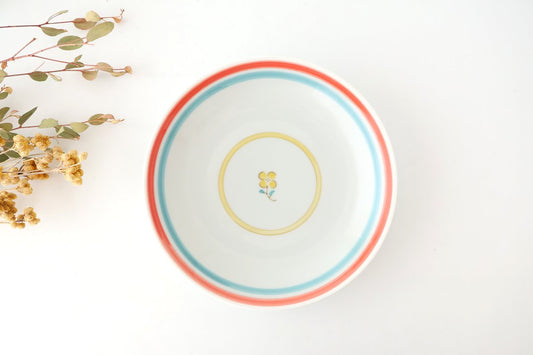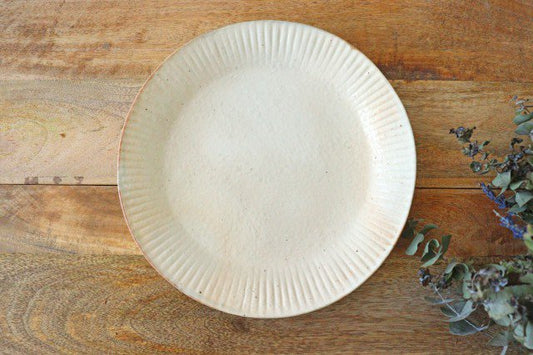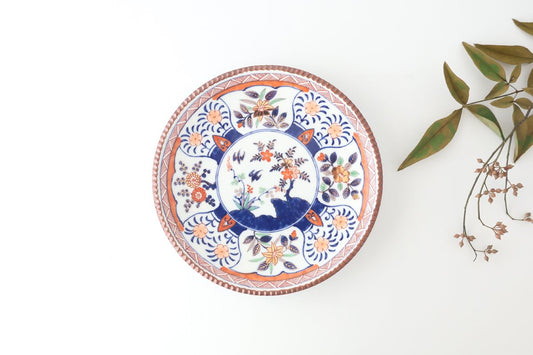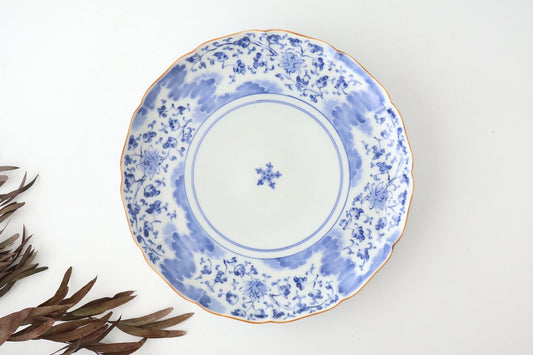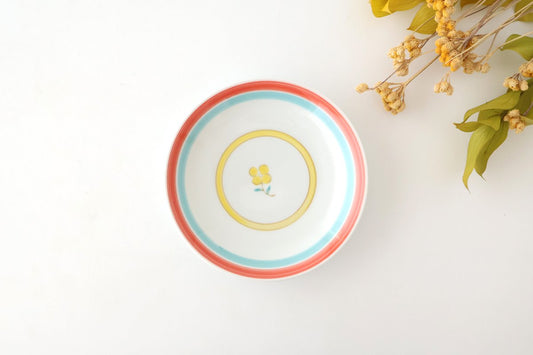Collection: Plates
What Are Japanese Plates?
Japanese plates are an essential part of traditional Japanese tableware, designed to enhance the presentation and appeal of dishes. These plates come in various shapes, designs, and materials, reflecting Japan's rich food culture and aesthetic sensibilities. From traditional designs to modern interpretations, Japanese plates offer a wide range of options.
Serving Japanese CuisineFeatures of Japanese Plates
Diverse Designs: Japanese plates feature a wide array of designs, including floral patterns, geometric shapes, and animal motifs. These designs add color and personality to the dining table. Seasonal designs and traditional patterns reflect the beauty of Japan's four seasons and landscapes, enhancing the visual appeal of the food and making the dining experience more enjoyable.
Various Shapes: Japanese plates come in many shapes, including round, square, rectangular, and oval. The variety allows for different types of food presentation, from sushi and sashimi on long plates to salads and stews in deep bowls. The use of various plate sizes and shapes adds a touch of authenticity to Japanese dining.
High-Quality Materials: Made from high-quality materials such as ceramic, porcelain, glass, and wood, Japanese plates combine natural beauty with durability. Notable types like Arita ware and Kutani ware are renowned for their exquisite designs and high standards of craftsmanship. These materials ensure the plates are both functional and visually appealing, suitable for everyday use and special occasions.
Techniques and Precision
Japanese plates are crafted by skilled artisans who meticulously create each piece using traditional techniques passed down through generations. For example, Arita ware, known for its white base and blue underglaze, has been produced since the 17th century using time-honored methods. Kutani ware, with its vibrant colors and bold designs, requires precise hand-painting skills.
The plates are made with remarkable precision, from thin and lightweight porcelain plates to thick and robust ceramic ones. This precision ensures not only the aesthetic beauty of the plates but also their practicality and ease of use.
Differences from Overseas Plates
Design: Japanese plates are characterized by intricate designs inspired by nature, seasons, and traditional motifs. In contrast, overseas plates often favor simpler, more functional designs. The delicate and detailed patterns on Japanese plates highlight the artistry and cultural significance embedded in each piece.
Techniques: Japanese plates are often decorated with elaborate hand-painted details and gold or silver accents, showcasing the artisans' skills. This hand-crafted approach results in unique variations in each piece, giving them a distinct character. On the other hand, many overseas plates are mass-produced using machines, ensuring uniformity but lacking the unique touch of hand-crafted items.
Uses of Japanese Plates
Serving Japanese Cuisine: Japanese plates are perfect for presenting sushi, sashimi, tempura, and other traditional dishes. Their beautiful designs enhance the appearance of the food, making it more appealing.
Serving Western Dishes and Desserts: Japanese plates are also suitable for serving Western dishes and desserts. The fusion of different culinary cultures can create new and exciting dining experiences.
As Serving Platters: During parties and gatherings, Japanese plates can be used as serving platters for cheese, fruits, canapés, and other appetizers, adding elegance and style to the table.
As Interior Decor: The beautiful designs of Japanese plates make them ideal for use as interior decor. They can be displayed as decorative plates, adding a touch of artistry to the home.
Conclusion
Japanese plates are renowned for their beauty and functionality, making them suitable for both everyday use and special occasions. The fusion of traditional techniques and modern designs breathes new life into these plates, bringing a fresh dynamic to the dining table. Enjoy your meals even more with the elegance of Japanese plates.
-
Flower-design Small Bowl Green | Kobachi Mino Ware
Regular price $10.40 USDRegular priceUnit price / per -
Flower-shaped and Cracked Small Plate Pink | Mino Ware
Regular price $10.40 USDRegular priceUnit price / per -
Flower-shaped and Cracked Small Plate Gray | Mino Ware
Regular price $10.40 USDRegular priceUnit price / per -
Long Plate creme White | Sushi Plate Mino Ware
Regular price $38.50 USDRegular priceUnit price / per -
Small Chrysanthemum-shaped Bowl Blue Flower Annan | Mino Ware
Regular price $20.70 USDRegular priceUnit price / per -
Round Plate Blue Flower Annan21cm/8.3in | Mino Ware
Regular price $40.00 USDRegular priceUnit price / per -
Octagonal Plate Blue Flower Annan | Mino Ware
Regular price $51.90 USDRegular priceUnit price / per -
Round Plate Blue Flower Annan 15cm/5.9in | Mino Ware
Regular price $32.60 USDRegular priceUnit price / per -
Yoshida Ware Round Plate Flower-dot 15cm/5.9in
Regular price $31.10 USDRegular priceUnit price / per -
Yoshida Ware Round Plate Flower-dot 21cm/8.3in
Regular price $47.40 USDRegular priceUnit price / per -
POTPURRI Gold Ultramarine Small Plates Pair Set
Regular price $47.40 USDRegular priceUnit price / per -
POTPURRI Kasumi(Haze) Small Plates Pair Set
Regular price $47.40 USDRegular priceUnit price / per -
Bread Plate natural wood M
Regular price $41.50 USDRegular priceUnit price / per -
Bread Plate natural wood L
Regular price $63.70 USDRegular priceUnit price / per -
Craft Ishikawa Oven Plate White Heat-resistant 23cm/9in | Banko Ware
Regular price $85.90 USDRegular priceUnit price / per -
Craft Ishikawa Oval Plate Okoge 21cm/8.3in | Banko Ware
Regular price $32.60 USDRegular priceUnit price / per -
Flat Plate White Storm 21㎝/8.3in | Shigaraki Ware
Regular price $54.80 USDRegular priceUnit price / per -
Round Plate Yellow Flower L | Hasami Ware
Regular price $44.40 USDRegular priceUnit price / per -
Fururu Rounbd Plate Blue Flower M | Hasami Ware
Regular price $59.30 USDRegular priceUnit price / per -
Fururu Rounbd Plate Black Flower M | Hasami Ware
Regular price $59.30 USDRegular priceUnit price / per -
Flower-shaped Plate Matte Black L | Mino Ware
Regular price $35.60 USDRegular priceUnit price / per -
Round Plate Persian Blue 24cm/9.4in | Shigaraki Ware
Regular price $57.80 USDRegular priceUnit price / per -
Cuore Flare Plate Dark Gray L | Mino Ware
Regular price $53.30 USDRegular priceUnit price / per -
Oval Plate Olive Lobster | Hasami Ware
Regular price $63.70 USDRegular priceUnit price / per -
 Sold out
Sold outRim Plate natural wood L
Regular price $51.90 USDRegular priceUnit price / per -
Round Plate natural wood
Regular price $65.20 USDRegular priceUnit price / per -
Flower-shaped Plate Oribe and Brown Tokusa 21cm/8.3in | Seto Ware
Regular price $74.10 USDRegular priceUnit price / per -
ORLO Round Plate Brown 24cm/9.4in | Mino Ware
Regular price $59.30 USDRegular priceUnit price / per -
ORLO Round Plate Ivory 24cm/9.4in | Mino Ware
Regular price $59.30 USDRegular priceUnit price / per -
Furutani Seitosho Ruffle Plate White L
Regular price $54.80 USDRegular priceUnit price / per -
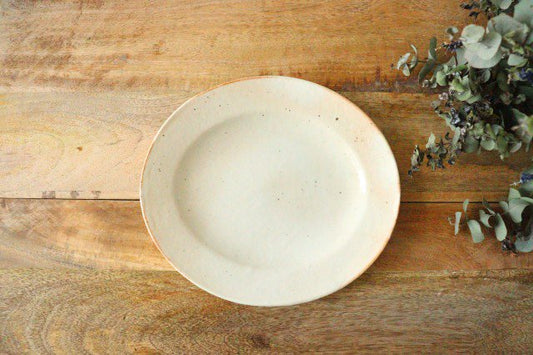 Sold out
Sold outFurutani Seitosho Oval Rim Plate
Regular price $40.00 USDRegular priceUnit price / per -
Oval Plate Butterfly 24cm/9.4in | Hasami Ware
Regular price $35.60 USDRegular priceUnit price / per -
Koyo Kiln Flower-shaped Plate Red and White Plum | Arita Ware
Regular price $59.30 USDRegular priceUnit price / per -
Rinkurou Kiln Round Plate Old Imari Flower and Tree 21cm/10.6in | Hasami Ware
Regular price $222.20 USDRegular priceUnit price / per -
Flower-shaped Plate Arabesque and Cloud 27cm/10.6in | Arita Ware
Regular price $222.20 USDRegular priceUnit price / per -
Round Plate Semi-porcelain Blue Check 21㎝/8.3in | Arita Ware
Regular price $60.70 USDRegular priceUnit price / per -
Oval Plate Olive Green | Hasami Ware
Regular price $63.70 USDRegular priceUnit price / per -
Serving Bowl Brownglaze | Mino Ware
Regular price $43.00 USDRegular priceUnit price / per -
Serving Bowl White Kohiki | Mino Ware
Regular price $43.00 USDRegular priceUnit price / per -
Flat Plate White Storm 15㎝/6in | Shigaraki Ware
Regular price $32.60 USDRegular priceUnit price / per -
Craft Ishikawa Oven Plate Black Heat-resistant 18cm/7in | Banko Ware
Regular price $62.20 USDRegular priceUnit price / per -
Craft Ishikawa Oval Plate Okoge 16cm/6.3in | Banko Ware
Regular price $20.70 USDRegular priceUnit price / per -
 Sold out
Sold outServing Plate Knot Red|Arita Ware
Regular price $38.50 USDRegular priceUnit price / per -
 Sold out
Sold outServing Plate Knot Gold|Arita Ware
Regular price $43.00 USDRegular priceUnit price / per -
Round Plate Yellow Flower M | Hasami Ware
Regular price $23.70 USDRegular priceUnit price / per -
Fururu Rounbd Plate Blue Flower S | Hasami Ware
Regular price $37.00 USDRegular priceUnit price / per -
Round Plate Semi-porcelain Blue Check 15㎝/6in | Arita Ware
Regular price $37.00 USDRegular priceUnit price / per -
Serving Plate Flower-shape Matte Black | Mino Ware
Regular price $22.20 USDRegular priceUnit price / per

















